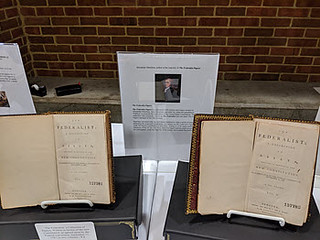When most people think of banned books they think of parental challenges to books in public schools or public libraries. It is true that most of the book challenges (96%) reported to the American Library Association’s Office of Intellectual Freedom occur in those settings. They key word here is “reported.” There is a largely unremarked upon issue of banned books when it comes to prison settings.
In Thornburgh v. Abbott, 490 U.S. 401, 414-419 (1989), the U.S. Supreme Court applied a four factor test (taken from Turner v. Safley, 482 U.S. 78 (1987)) to prison regulations banning certain publications:
- Whether the governmental objective underlying the regulations at issue is legitimate and neutral, and that the regulations are rationally related to that objective.
- Whether there are alternative means of exercising the right that remain open to prison inmates.
- The impact that accommodation of the asserted constitutional right will have on others (guards and inmates) in the prison.
- The existence of obvious, easy alternative.
Which books are banned from prisons is largely a regulatory issue. In the Federal prison system, 28 C.F.R. § 540.71 (2018) provides the general procedures governing publications coming into prisons. States have their own regulations. Ohio’s can be found in the Ohio Admin. Code 5120-9-19.
The Tallahassee Democrat reported that 20,000 books have been banned in Florida prisons. The Human Rights Defense Center, which at one point sued over the banning of Prison Legal News, has also received a list of books banned by Florida prisons. Among the books related to prisons and prisoner rights banned:
- How to Leave Prison Early (a book written by a Florida clemency attorney about clemency and parole)
- Law Man: Memoir of a Jailhouse Lawyer (a book written by a Georgetown professor and prison reform advocate)
- Disciplinary Self-Help Litigation Manual (informing prisoners of their rights when faced with the consequences of a disciplinary hearing)
- Prison Legal News
- Criminal Legal News
- Federal Prison Handbook (written by former prisoner and prison consultant to guide prisoners through the Federal prison system)
- 23/7 Pelican Bay Prison and the Rise of Long-Term Solitary Confinement
- Coming Out of the Concrete Closet
Florida is not alone in banning books related to prisoner rights. The Center for Constitutional Rights and the National Lawyers Guild filed a lawsuit in the Western District of Virginia challenging the Virginia Department of Corrections’ decision to ban their joint publication, the Jailhouse Lawyer’s Handbook, from all Virginia prisons. That suit was settled but that is just one banned publication of many. Other books that have been banned include books critical of policing and the prison system such as The New Jim Crow, Prison Nation, and Chokehold: Policing Black Men.
The Human Rights Defense Center obtained a thirty-three page list of printed materials and books that are screened and excluded from Ohio prisons. You can also read about banned book lists from other states at The Human Rights Defense Center and at Books to Prisoners. Even if a book is not banned, getting access to books is also an issue. Prisons in Ohio and other states have even banned book donations, requiring prisoners to purchase new books from approved vendors.
For more on this issue:
- Literature Locked Up: How Prison Book Restriction Policies Constitute the Nation’s Largest Book Ban
- Censorship in Prisons and Jails: A War on the Written Word
- The Marshall Project: Banning Books in Prison
“A dangerous book will always be in danger from those it threatens with the demand that they question their assumptions. They’d rather hang on to the assumptions and ban the book.” ― Ursula K. Le Guin (from In Support of Banned Books Week: Quotes on Censorship)


